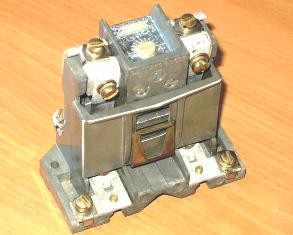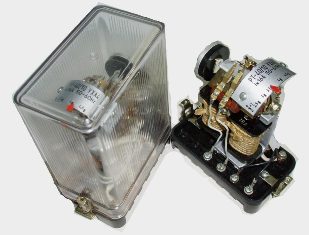Protective devices for electrical equipment and electrical networks
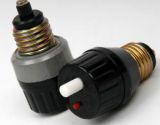 All existing operated or newly constructed electrical networks must be provided with the necessary and sufficient means of protection, primarily from electric shock to people working with these networks, sections of circuits and electrical equipment from overload currents, short-circuit currents, peak currents . These currents can lead to damage both to the networks themselves and to the electrical appliances operating in these networks.
All existing operated or newly constructed electrical networks must be provided with the necessary and sufficient means of protection, primarily from electric shock to people working with these networks, sections of circuits and electrical equipment from overload currents, short-circuit currents, peak currents . These currents can lead to damage both to the networks themselves and to the electrical appliances operating in these networks.
Each transformer substation, each overhead line, each cable line and distribution intra-building networks, each electrical receiver have protective devices that guarantee their continuous and reliable operation.
Currently, there is a huge selection of such devices in the world. They can be selected by type, by connection method, by protection parameters. Devices for the protection of electrical equipment and electrical networks are a very broad group and include such devices as: fuses (fuses), circuit breakers, various relays (current, thermal, voltage, etc.).
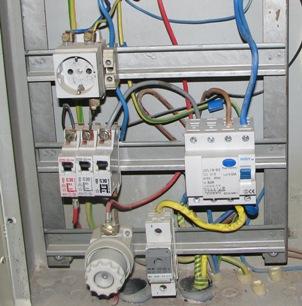
Fuses protect the circuit section from current overloads and short circuits. They are divided into disposable fuses and fuses with replaceable inserts. They are used both in industry and in everyday life. There are fuses operating at voltages up to 1kV, and also high-voltage fuses installed at voltages above 1000V (for example, fuses of auxiliary transformers at substations 6 / 0.4 kV). Ease of use, simplicity of design and ease of replacement made fuses very widespread.
For more information on fuses and their use to protect electrical installations, see here:
Fuses PR-2 and PN-2-device, technical characteristics
High voltage fuses PKT, PKN, PVT
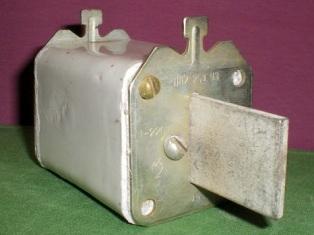
Circuit breakers play the same role as fuses. Only in comparison with them they have a more complex design. But at the same time it is much more convenient to use circuit breakers. If, for example, a short circuit occurs in the network due to aging of the insulation, the circuit breaker will disconnect the damaged section from the supply. At the same time, he himself is easily restored, does not require replacement with a new one, and after repair work will again protect his section of the network. It is also convenient to use the switches when performing routine repair work.
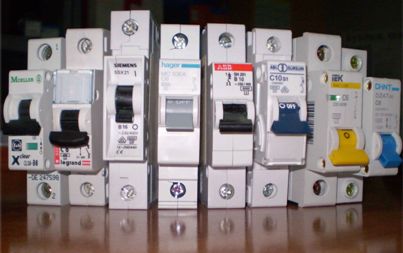
Circuit breakers are manufactured with a wide range of rated currents. This allows you to choose the right one for almost any task. Switches operate at voltages up to 1 kV and at voltages above 1 kV (high voltage switches).
High voltage switches, to ensure clear contact release and prevent arcing, are manufactured by vacuum, filled with inert gas or filled with oil.
Unlike fuses, circuit breakers are manufactured for both single-phase and three-phase networks. That is, there are one-, two-, three-, four-pole switches that control three phases of a three-phase network.
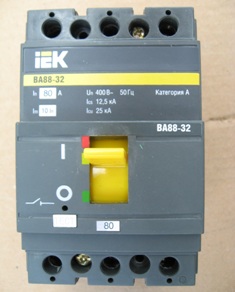
For example, if a short to ground occurs in one of the cores of the motor's power cable, the circuit breaker will cut power to all three, not the damaged one. Because after the disappearance of one phase, the electric motor will continue to work on two. Which is not permissible, as this is an emergency mode of operation and may lead to its premature failure. Circuit breakers are manufactured for both DC and AC voltage operation.
For more information on circuit breakers see here:
For switches for voltages above 1000V:
High voltage switches: classification, device, principle of operation
SF6 circuit breakers 110 kV and above
Various relays have also been developed to protect electrical equipment and electrical networks. The required relay can be selected for each task.
Thermal relay — the most common type of protection for electric motors, heaters, any power devices against overload currents. Its principle of operation is based on the ability of an electric current to heat the wire through which it flows. The main part of the thermal relay is bimetallic plate… Which, when heated, bends and thus breaks the contact.The plate heats up when the current exceeds its allowable value.
Thermal relays — device, principle of operation, technical characteristics
Current relayscontrol the amount of current in the network, voltage relay reacting to changes in the supply voltage, differential current relay that are activated when leakage current occurs.
As a rule, such leakage currents are very small and circuit breakers, together with fuses, do not react to them, but they can cause fatal injury to a person when he comes into contact with the body of a defective device. With a large number of electrical receivers requiring differential relay connection, to reduce the size of the power panel feeding these electrical receivers, combination machines are used.
Combining circuit breakers and differential relay devices (circuit breakers with differential protection or circuit breakers). Often the use of such combined protective devices is very important. This reduces the size of the power cabinet, facilitates installation and therefore reduces installation costs.
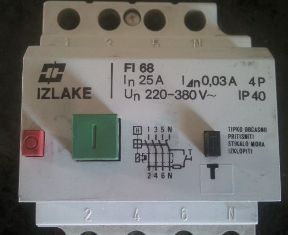
See also: Classification of differential protection devices
Relay protection cabinets are assembled on the basis of relays in production. Prefab relay protection cabinets ensure stable operation users of different categories… An example of such protection is an automatic transfer switch (ATS), assembled on the basis of relays and digital protection devices. A reliable way to provide users with backup power in the event of a loss of the main.
The ATS requires at least two power supplies to operate. For users of the first category, the presence of an ATS device is a prerequisite.Because power outages for this category of users can lead to danger to human life, disruption of technological processes, material damage.
Protective devices must be selected according to user parameters, characteristics of wires, short-circuit currents, type of load.

